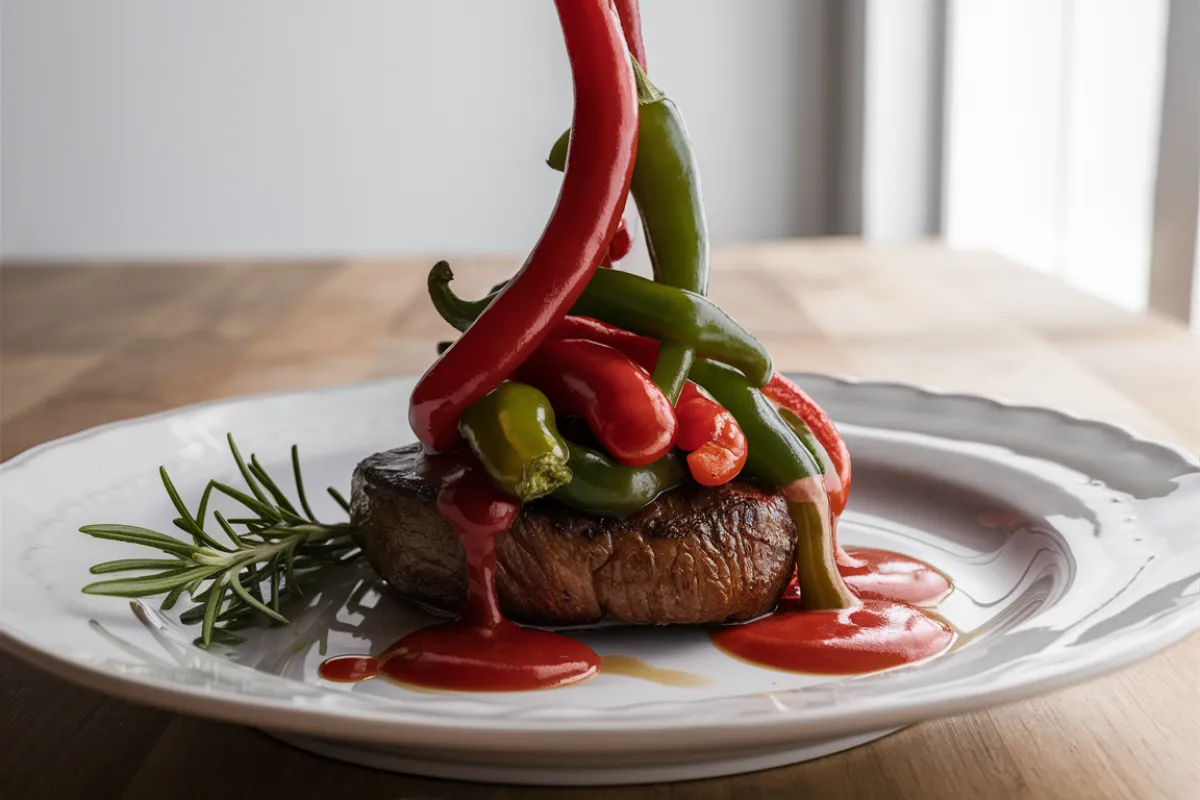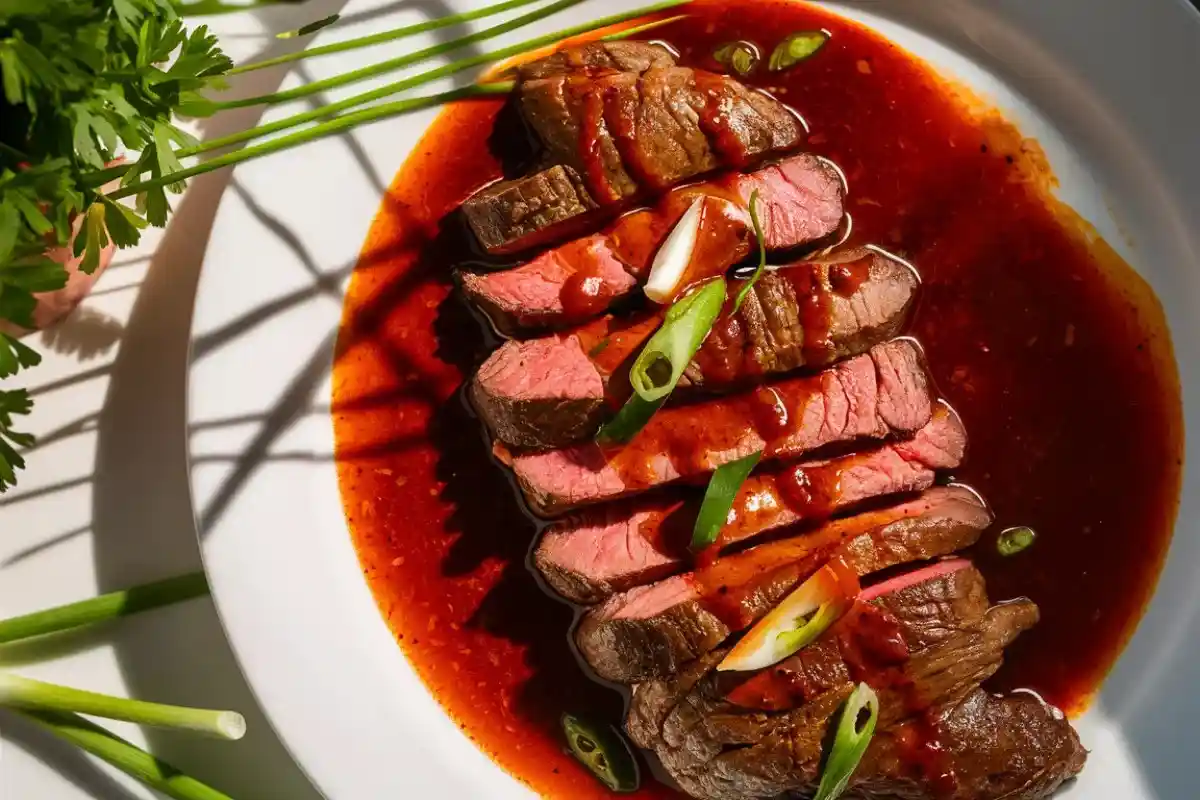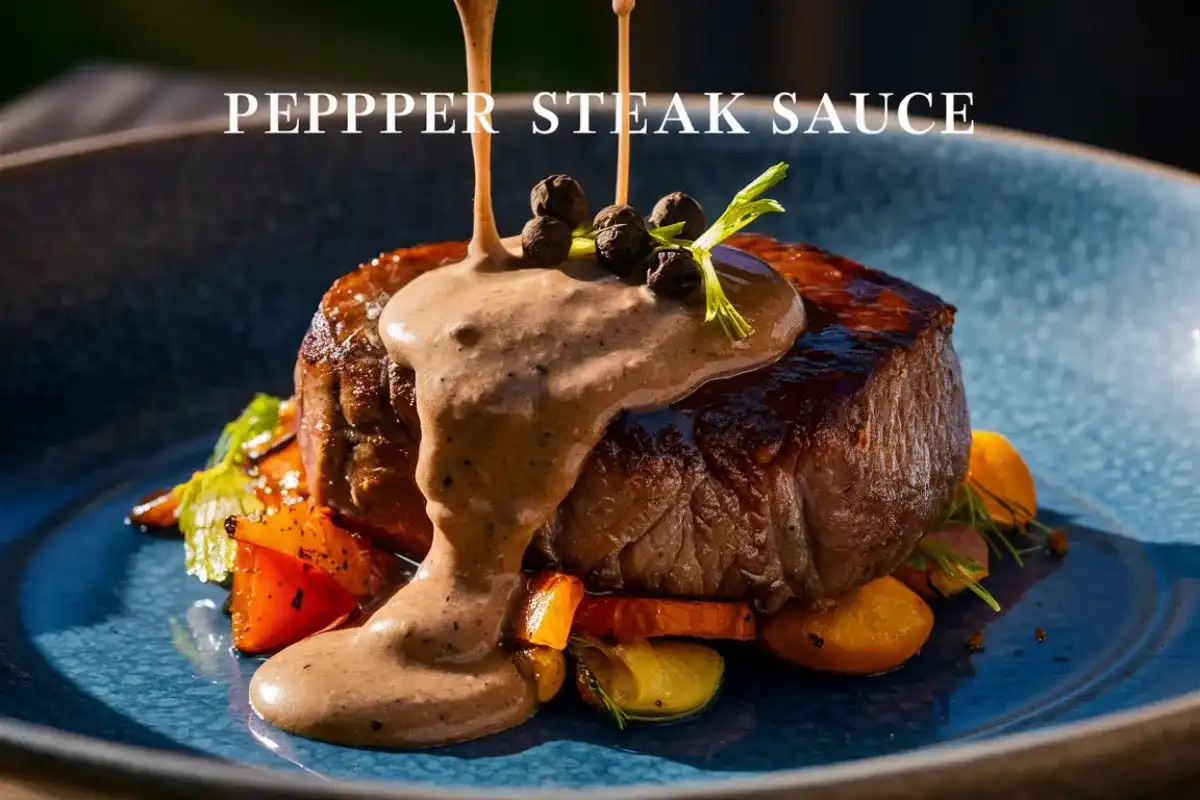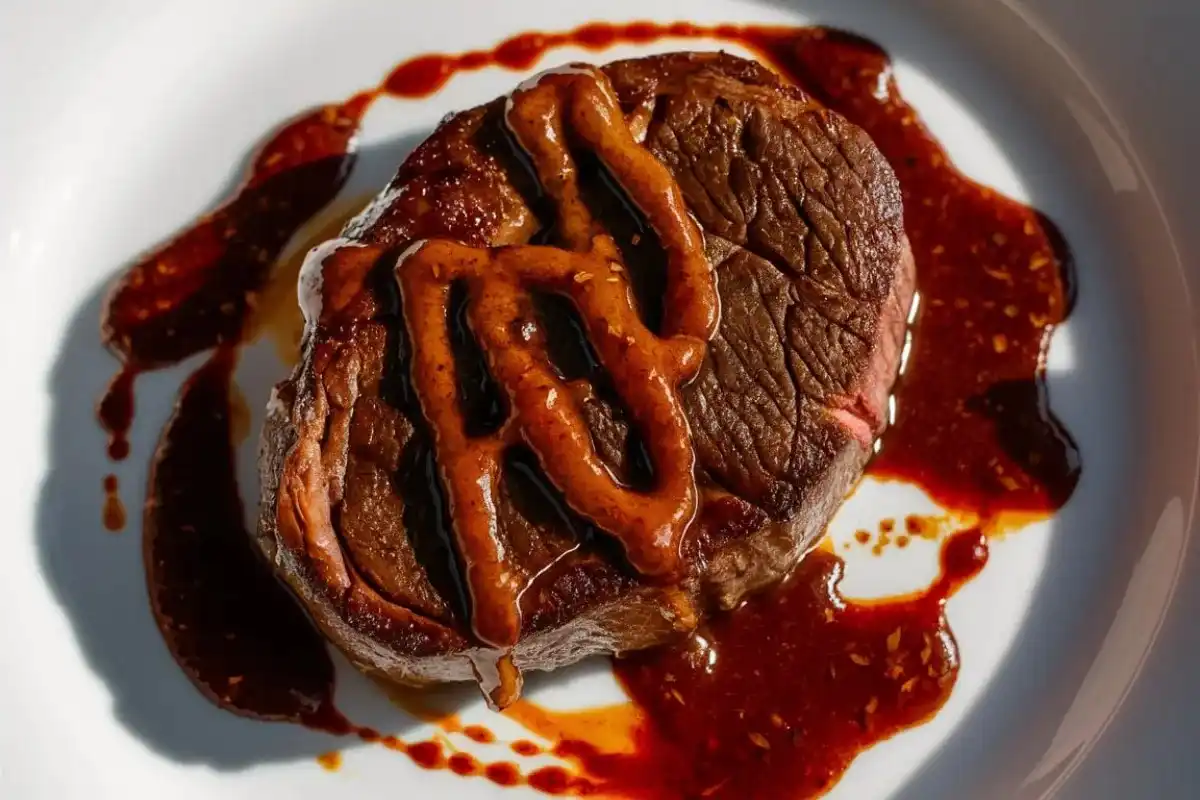Pepper steak is a beloved dish that combines tender strips of beef with vibrant vegetables, all brought together by a flavorful sauce that is rich, savory, and slightly spicy. The magic of this dish lies in the sauce, which not only complements the ingredients but also enhances the overall dining experience. In this expanded article, we will delve deep into the ingredients of pepper steak sauce, traditional preparation methods, the history and cultural significance of the dish, sauce variations, and tips for perfecting your own pepper steak sauce at home.
The Origins of Pepper Steak
Before we dive into the ingredients and preparation, it’s important to understand the origins of pepper steak. People widely recognize this dish as part of Chinese-American cuisine, though its roots trace back to traditional Chinese cooking methods. The concept of stir-frying meat with vegetables and a savory sauce is a hallmark of Chinese cuisine, designed to bring out the best flavors of fresh ingredients while preserving their natural textures.
Pepper steak, as we know it today, likely evolved in Chinese immigrant communities in the United States during the late 19th and early 20th centuries. Chinese immigrants adapted their cooking techniques to the ingredients available in America, leading to the creation of dishes that are now staples in Chinese-American cuisine. The use of soy sauce, black pepper, and stir-frying methods were central to this adaptation, resulting in dishes like pepper steak that blend traditional Chinese flavors with a new culinary context.
The Core Ingredients of Pepper Steak Sauce

The foundation of any great pepper steak lies in its sauce. The sauce is what binds the beef and vegetables together, creating a dish that is flavorful, balanced, and satisfying. Here’s a comprehensive look at the core ingredients that make up pepper steak sauce:
1. Soy Sauce
Soy sauce is the backbone of pepper steak sauce. It provides the essential umami flavor, which is the savory taste that enhances the depth of the dish. Soy sauce is made from fermented soybeans, wheat, water, and salt, and it has been a staple in Asian cuisine for centuries. There are different types of soy sauce, including light soy sauce, dark soy sauce, and tamari. Each type brings a unique flavor profile to the dish:
- Light Soy Sauce: This is the most commonly used soy sauce in Chinese cooking. It has a thinner consistency and a saltier taste, making it perfect for seasoning and adding umami without overpowering other flavors.
- Dark Soy Sauce: Dark soy sauce is thicker, darker, and slightly sweeter than light soy sauce. It’s often used to add color and a deeper, more robust flavor to dishes.
- Tamari: Tamari is a type of soy sauce traditionally made without wheat, making it a good option for those who are gluten-intolerant. It has a richer, smoother flavor than regular soy sauce.
Understanding the differences between these varieties of soy sauce allows you to tailor the pepper steak sauce to your specific taste preferences.
2. Black Pepper
As the name suggests, black pepper is a key ingredient in pepper steak sauce. Black pepper adds heat and depth to the dish, balancing the richness of the soy sauce with its sharp, spicy notes. The quality of the black pepper you use can significantly impact the flavor of the sauce:
- Freshly Ground Black Pepper: Freshly ground black pepper is ideal for pepper steak sauce because it has a more intense and complex flavor compared to pre-ground pepper. The essential oils in the peppercorns add a distinct spiciness that enhances the dish.
- Pre-Ground Black Pepper: While less pungent than freshly ground pepper, pre-ground black pepper is more convenient and still adds the necessary heat to the sauce.
The amount of black pepper you use can be adjusted to your taste. If you prefer a milder flavor, use less pepper, and for a spicier kick, increase the amount.
3. Garlic and Ginger
Garlic and ginger are classic aromatics that add depth and complexity to the pepper steak sauce. These ingredients are essential in many Asian dishes, providing a fragrant base that enhances the overall flavor profile of the sauce:
- Garlic: Garlic adds a pungent, slightly sweet flavor to the sauce. When sautéed, it becomes mellow and rich, contributing to the umami of the dish.
- Ginger: Ginger adds a warm, spicy note that complements the black pepper. It also has a slight sweetness and earthiness that balances the savory elements of the sauce.
For the best flavor, use fresh garlic and ginger. Mince them finely to ensure they cook evenly and release their full flavor into the sauce.
4. Oyster Sauce
Oyster sauce is a thick, dark brown condiment made from oyster extracts, sugar, salt, and water, thickened with cornstarch. It adds a sweet and savory richness to the pepper steak sauce, enhancing the umami flavor of the soy sauce and adding a subtle sweetness. Oyster sauce is a common ingredient in Chinese cooking, known for its ability to add depth and complexity to stir-fried dishes.
When incorporating oyster sauce into your pepper steak, it’s important to balance it with the other ingredients. Too much oyster sauce can make the dish overly sweet, while too little might result in a sauce that lacks depth.
For those unfamiliar with oyster sauce, exploring its uses in various dishes can open up a world of culinary possibilities. Learn more about using oyster sauce to enhance the flavors in your cooking.
5. Sugar
Sugar is often added to pepper steak sauce to balance the saltiness of the soy sauce and the spiciness of the black pepper. The sweetness of the sugar rounds out the flavors, making the sauce more harmonious. The type of sugar used can vary:
- White Sugar: This is the most common type of sugar used in pepper steak sauce. It dissolves easily and provides a clean, sweet flavor.
- Brown Sugar: Brown sugar adds a deeper, more complex sweetness with a hint of molasses. It can give the sauce a richer flavor and a slightly darker color.
- Honey: Some recipes call for honey instead of sugar, which adds a floral sweetness and a sticky texture to the sauce.
The amount of sugar used in the sauce can be adjusted based on your taste preference. If you prefer a sweeter sauce, add a little more sugar, but be careful not to overwhelm the savory elements of the dish.
6. Cornstarch
Cornstarch is used as a thickening agent in pepper steak sauce. It helps the sauce adhere to the meat and vegetables, creating a glossy, velvety texture that coats each bite. To use cornstarch effectively:
- Cornstarch Slurry: Combine cornstarch with a small amount of water to create a slurry before adding it to the sauce. This prevents clumping and ensures an even distribution.
- Cooking the Sauce: Once the cornstarch slurry is added, the sauce should be cooked over medium heat until it thickens. Stir constantly to avoid lumps and to achieve a smooth texture.
The amount of cornstarch can be adjusted depending on how thick you want the sauce to be. For a thicker sauce, use more cornstarch, and for a thinner sauce, use less or add more liquid.
7. Broth or Stock
Broth or stock is added to the pepper steak sauce to enhance its richness and depth. The choice of broth can influence the flavor of the sauce:
- Beef Broth: Using beef broth intensifies the beefy flavor of the dish, making the sauce more robust.
- Chicken Broth: Chicken broth is milder and adds a subtle depth without overpowering the other ingredients.
- Vegetable Broth: For a lighter, vegetarian-friendly option, vegetable broth can be used.
The broth also helps to thin out the sauce, creating a consistency that is perfect for coating the beef and vegetables. You can adjust the amount of broth based on how thick or thin you prefer the sauce.
Variations of Pepper Steak Sauce

While the traditional pepper steak sauce is delicious on its own, there are countless ways to customize it to suit your taste. Here are some popular variations that you can try:
1. Wine or Vinegar
Adding a splash of wine or vinegar to the sauce introduces acidity that can enhance the overall flavor. Red wine or rice vinegar are popular choices:
- Red Wine: Red wine adds a rich, fruity flavor to the sauce. It pairs well with the beef and deepens the sauce’s color.
- Rice Vinegar: Rice vinegar adds a mild acidity that balances the sweetness and saltiness of the sauce without overpowering the other flavors.
When using wine or vinegar, add it early in the cooking process to allow the alcohol or acidity to cook off, leaving behind a balanced flavor.
2. Hoisin Sauce
Hoisin sauce is a thick, fragrant sauce commonly used in Chinese cuisine. It adds a sweet and slightly spicy element to the pepper steak sauce, deepening the flavor profile:
- Sweetness: Hoisin sauce adds a caramel-like sweetness that complements the savory and spicy elements of the dish.
- Spiciness: Some hoisin sauces have a mild spiciness, which can enhance the heat from the black pepper.
You can use hoisin sauce as a substitute for or in addition to oyster sauce, depending on your taste preference.
3. Sesame Oil
Sesame oil adds a nutty, toasted flavor to the pepper steak sauce. Just a few drops of sesame oil can significantly enhance the dish’s flavor:
- Toasted Sesame Oil: This type of sesame oil is dark and rich, with a strong, nutty flavor. It’s best used as a finishing oil, added at the end of cooking.
- Regular Sesame Oil: Regular sesame oil, which is lighter in color and flavor, can be used during cooking.
Sesame oil is potent, so use it sparingly to avoid overpowering the other ingredients.
4. Chili Peppers or Flakes
For those who enjoy a bit of heat, adding chili peppers or red pepper flakes to the sauce can increase the spiciness. The type of chili pepper or flake you use will determine the level of heat:
- Fresh Chili Peppers: Chop fresh chili peppers, such as jalapeños or Thai chilies, and add them to the sauce for a fresh, vibrant heat.
- Red Pepper Flakes: Red pepper flakes are a convenient way to add heat. They disperse evenly throughout the sauce, providing a consistent level of spiciness.
Adjust the amount of chili pepper or flakes based on your spice tolerance.
5. Bell Peppers and Onions
The dish often includes bell peppers and onions, which can also influence the flavor of the sauce:
- Bell Peppers: Bell peppers add sweetness and a slight crunch to the dish. Red, yellow, and orange bell peppers are sweeter, while green bell peppers are more bitter.
- Onions: Onions add a savory depth and a bit of sweetness to the sauce. When sautéed, they become soft and slightly caramelized, enhancing the overall flavor.
These vegetables not only add color and texture but also infuse the sauce with additional layers of flavor.
The Cultural Significance of Pepper Steak

Pepper steak holds a special place in Chinese-American cuisine, reflecting the blending of Chinese culinary traditions with American ingredients and tastes. This dish is a testament to the adaptability and creativity of Chinese immigrants, who found ways to recreate the flavors of their homeland using the ingredients available in America.
In Chinese culture, stir-frying is a quick and efficient method of cooking that preserves the freshness and integrity of the ingredients. Pepper steak exemplifies this cooking technique by using high heat to sear the beef and vegetables while preserving their natural textures. The sauce, with its combination of soy sauce, black pepper, and other seasonings, ties the dish together, creating a harmonious balance of flavors.
Pepper steak has become a popular dish in Chinese-American restaurants, often served with steamed rice or noodles. It is a comforting, satisfying meal that appeals to a wide range of tastes, making it a favorite for many.
Tips for Achieving the Ideal Flavor Balance
Creating the perfect pepper steak sauce requires attention to detail and a balance of flavors. Here are some tips to help you achieve the best results:
1. Use Fresh Ingredients
The quality of the ingredients you use will greatly impact the flavor of the sauce. Fresh garlic, ginger, and black pepper will provide the most intense and complex flavors, elevating the overall dish.
2. Balance the Flavors
Pepper steak sauce is all about balance. The umami from the soy sauce, the heat from the black pepper, the sweetness from the sugar, and the richness from the oyster sauce should complement each other without one flavor overpowering the others. Taste the sauce as you cook and adjust the seasoning as needed.
3. Cook the Sauce Properly
To achieve the right consistency, cook the sauce over medium heat, stirring constantly until it thickens. Be careful not to overcook the sauce, as it can become too thick or develop a burnt flavor. If the sauce becomes too thick, thin it out with a little more broth.
4. Customize to Your Taste
Don’t be afraid to experiment with different ingredients and variations. Whether you prefer a spicier sauce with extra black pepper or a sweeter sauce with more sugar, customize the recipe to suit your preferences.
5. Pair with the Right Sides
People typically serve pepper steak with steamed rice or noodles, which help to soak up the flavorful sauce. However, you can also serve it with other sides, such as stir-fried vegetables or even mashed potatoes, for a unique twist.
Frequently Asked Questions
1. Can I make pepper steak sauce in advance?
Yes, you can prepare pepper steak sauce ahead of time. Store it in an airtight container in the refrigerator for up to a week. Reheat gently on the stove before using.
2. What can I use as a substitute for oyster sauce?
If you don’t have oyster sauce, you can use hoisin sauce or a combination of soy sauce and a bit of sugar to achieve a similar sweet and savory flavor.
3. How do I make my pepper steak sauce thicker?
To thicken the sauce, mix a small amount of cornstarch with water to create a slurry. Gradually add the slurry to the simmering sauce while stirring until it reaches your desired thickness.
4. Can I use other types of meat for pepper steak?
Yes, while traditionally made with beef, you can substitute the beef with chicken, pork, or even tofu for a vegetarian version. Adjust the cooking time accordingly to ensure the meat is cooked through.
5. How can I make the sauce spicier?
To add more heat to your pepper steak sauce, increase the amount of black pepper or add chili flakes or fresh chili peppers. Adjust to your spice tolerance.
Conclusion
Pepper steak sauce is the heart of the dish, bringing together the savory, spicy, and umami flavors that make this dish so beloved. By understanding what pepper steak sauce is made of and how to prepare it, you can create a dish that is not only delicious but also deeply rooted in the traditions of Chinese-American cuisine. By mastering the art of making pepper steak sauce, you can enjoy a meal that is flavorful, satisfying, and rich in cultural history.
For more culinary inspiration and ideas on how to use savory sauces in your cooking, check out this article on beef jerky recipes to explore how bold flavors can enhance your meals.

